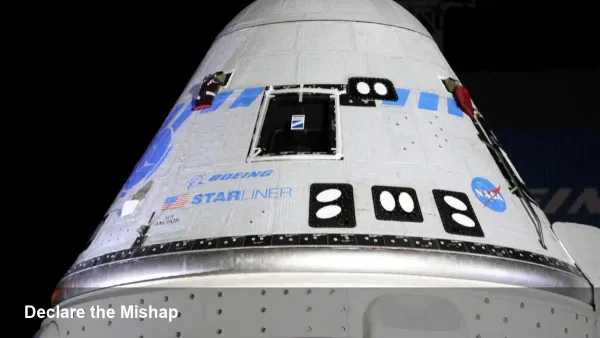Production of corn fodder by hydroponics method
In order to make more profit in the animal husbandry business, it is necessary to reduce the cost of animal feed.

In order to make more profit in the animal husbandry business, it is necessary to reduce the cost of animal feed. Generally, 70 to 75 percent of the total expenditure is incurred on animal feed, of which 30 to 35 per cent is incurred on green fodder. It is difficult to get green fodder due to the increase in population every year as well as the decrease in pasture land. In addition, due to rising land prices, high labor rates and lack of drinking water, it is expensive to get green fodder for livestock and it is advisable to grow green fodder by hydroponics method considering the declining natural resources and cost of fodder. Given the limited water available for growing fodder, there is no doubt that this new method will be beneficial for growing green fodder.
Our country has 17% of the world's livestock population. India needs 62.2 lakh tonnes of green fodder for livestock against which 22.4 lakh tonnes of green fodder is available. Thus, there is a decrease of 63% in greenery. As per the census of 2012, approximately 86 lakh hectare area is under fodder crops. Which is approximately 4.6% of the total cultivable land. In Gujarat, Haryana, Punjab, etc., 10% of the land is under fodder cultivation. 70% of the total milk production cost is for livestock and the remaining 30% is for medicine and labor. The main reasons for low milk production capacity per animal in India are lack of fodder in the diet and poor quality of fodder.
For 75% of small and marginal farmers in India, animal husbandry business along with agriculture is economically viable. Approximately 1087 kg per Indian cow calf. Gives milk which is much less than Israel (9583 kg), USA (9118 kg) and Denmark (8131 kg).
Dairy animals that give 5 to 7 liters of milk daily need green fodder as food. Corn greens can be prepared very well by hydroponics method.
What is the difference between the traditional method of corn and the hydroponics method of production is shown in the table.
|
Details |
Traditional produce above ground |
Production from hydroponics |
|
Area of land |
10,000 sq.m |
50 sq.m |
|
Soil fertility |
Is required |
Not necessarily |
|
compost |
Is required |
Not necessarily |
|
Water and electricity |
Should be very high |
Should be less |
|
Labour requirement |
Want more |
Should be less |
|
Crop rotation |
45-60 days |
7 days |
|
Crop production |
Depending on the environment |
Get the prescribed product if the environment is controlled |
|
Source : farmer world 2017 |
||
Chemical composition (in percent of diameter)
|
Nutrients |
Traditional corn fodder
cultivation |
Corns greens by hydroponics |
|
Protine |
10.67 |
13.57 |
|
Fat (ether extract) |
2.27 |
3.47 |
|
Cond fiber |
25.92 |
14.7 |
|
Soluble carbohydrates (nitrogen free extract) |
51.78 |
66.72 |
|
Total ash |
9.3 |
63.84 |
|
Acid in soyabean ash |
1.40 |
0.33 |
|
Reference : farmer world april 2018 |
||
Given the percentage shown in the table above, corn green fodder obtained by hydroponics method has higher protein, fat and carbohydrate content than conventional corn fodder.
In short, in conventional farming, it takes about one and a half months to get maize fodder in one hectare area while using hydroponics method only 20 sq. M. Green fodder production can be obtained from the area in 7 days.
Benefits of obtaining fodder from hydroponics
(1) very little use of land.
(2) water conservation means saving
(3) minimum use of fungicides
(4) less need for labor
(5) low maintenance costs
(6) Control over the atmosphere
(7) Availability of more digestible and nutritious green fodder
(8) Reduce in the cost of animal feed
(9) Faster growth (fodder growth)
(10) Infection free and weed free fodder
(11) Time saving
(12) Easily harvest fodder
(13) Get regular green fodder on a regular basis
(14) Increase animal fertility
(15) Increase in digestibility of nutrients
(16) Improving the general health of the animal
Limitations of the hydroponics method :
(1) Growing fodder on a commercial basis requires technical knowledge.
(2) There is more to investing in the beginning.
(3) There should be a constant supply of water.
The main limitations of conventional green fodder production are:
(1) The need of more land
(2) Water scarcity as well as brackish water
(3) The need of more labor
(4) The time it take to prepare the crop
(5) Do not get the same quality fodder
(6) Fertilizer requirement
(7) Effect on olive production
Method of producing corn fodder by hydroponics method:
(1) To take good quality maize seeds which have more than 85% vigor.
(2) Corn seeds should be free from pesticides.
(3) To remove soil waste etc. mixed in corn seeds by separator.
(4) Soak 1.5 kg of seeds in water for 24 hours and then spread it evenly in a tray.
(5) Arrange such a train in a rack (in the first two rows) then arrange this tray in the third as well as fourth line in the rack the next day.
(6) On the eighth day the corn is ready in the tray. Maize prepared in this way is high in protein.
You can use the internet for more details on the above as well as watch the video on YouTube to see how the whole system works. Such units of different capacities are available in the market. It is advisable to proceed only after self-examination.
According to the above method, barley, oats, sorghum etc. can also be grown by hydroponics method and produced green fodder and given to cattle.
Production: 1.5 kg grown in one love. 20 to 25 cm from corn seeds. 7 to 9 kg of corn with height. Get green fodder.
Benefits of feeding green fodder of maize:
(1) Milk production increases by about 5%
(2) Increases fat percentage.
(3) The quality of milk increases.
(4) Animals become healthy.
(5) The animal's appetite is revealed.
(6) Large quantities of green fodder can be obtained quickly and easily.
(7) Vegetable protein is the main source
(8) Carbohydrate is the source.
(9) is a good source of minerals.
(10) is a good source of vitamins.
(11) is the source of water (approximately 15 to 6 percent).
How to give green fodder of corn obtained by hydroponics?
(1) Give the green fodder to the dairy cattle in small pieces.
(2) Considering the protein requirement of dairy cattle, instead of one kg of fodder, 3 to 4 kg. Corn greens grown by Hydroponics can be given.
(3) A maximum of 20 kg per animal per day. Recommended to give corn greens as animal feed
(4) It is more beneficial to mix corn greens grown by hydroponics method with other dry fodder.
Details of Hydroponic System Unit:
(1) Production capacity: 300 sq. Ft. 1000 kg. Feed.
(2) Temperature requirement: 27 to 34 ° C. (Average 30 ° C)
(3) Relative Humidity Requirement: 66.5 to 98.5% (average 88%)
(4) 1.25 kg seed 10 kg feed
(5) 1 liter of water / 1 kg of fodder (Conventional fodder farming requires 80 liters of water)
(6) 1OOO kg The need for a laborer for the production of fodder
(7) Control against natural factors of the atmosphere
(8) costs 13 lakh
(9) A total of 600 trains are arranged in two rows in 6 rows in one machine.
(10) 1.6 kg waved in a tray. 8 to 10 kg from seeds. Get fodder.
(11) The fodder is prepared in seven days by sprinkling water every four hours by automatic system.
Factors affecting the quantity of greenery:
(1) seed, its quality and seed quality
(2) Atmospheric temperature and humidity
(3) Method management system such as water quality and pH B soaking time, supply of nutrients, quantity of seeds in the tray and germination time etc.
Given the rising cost of land in the near future and the limited availability of arable and fertile land, green fodder will have to be provided to the cattle by this method in future. With the use of which quality milk can be produced, its production will be better which will give economic prosperity to India.





